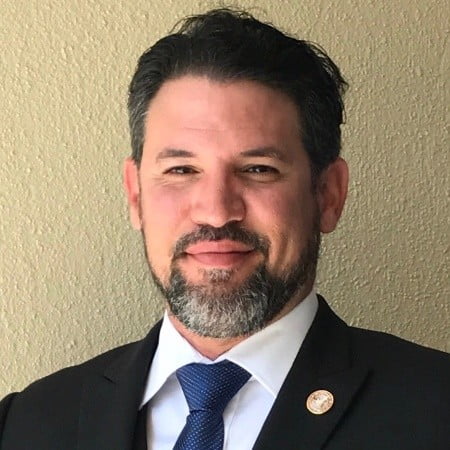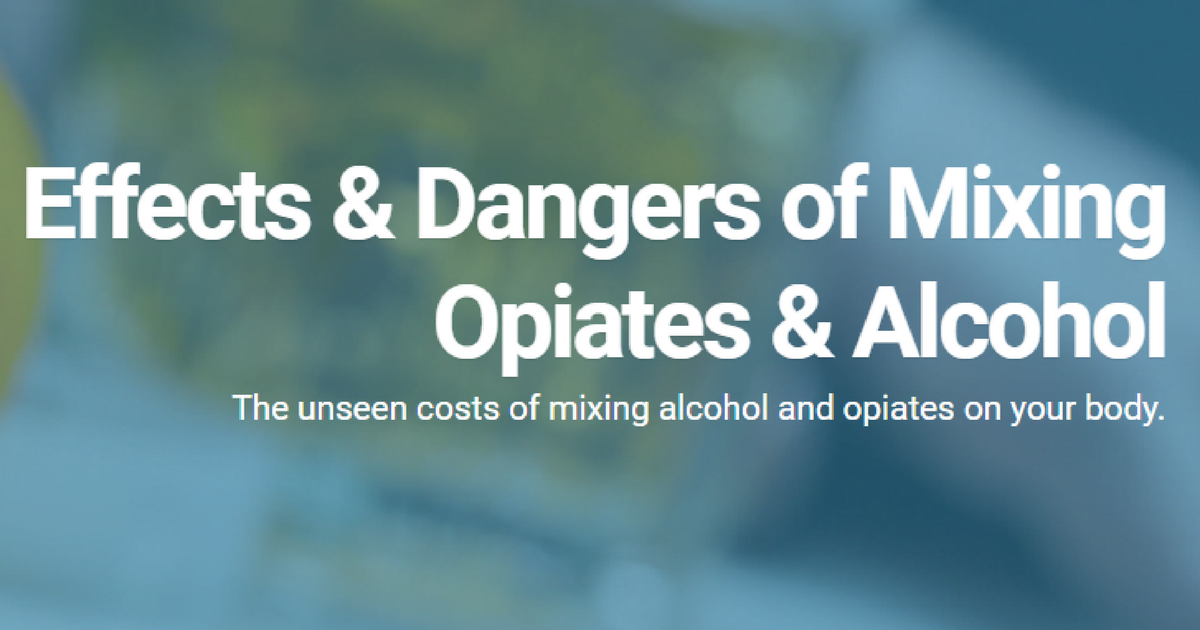

Effects & Dangers of Mixing Opiates & Alcohol
The unseen costs of mixing alcohol and opiates on your body.
Drinking Alcohol While Taking Opiates
Alcohol is a readily available, legal and socially acceptable drug. It is a drug that has some significant side effects when abused. Furthermore, when taken with other drugs, including opiates like Hydrocodone, Oxycodone and Morphine, those side effects are amplified. Opiates are strong prescription synthetic or semi-synthetic medications derived from Opium. They are painkillers given to people who are in significant amounts of pain. Unfortunately, they have a high potential for abuse and addiction. More importantly, when one mixes alcohol with opioids, the combined effects can be deadly.
A single serving of alcohol is considered 1.5 oz of hard liquor, 5 oz of wine or 12 oz of beer that is consumed within one hour. If a person has more than five drinks per hour when drinking, they are classed as a binge drinker. Binge drinking can often lead to alcohol poisoning or even death.
If people are prescribed opioid painkillers and strictly follow the prescribed instructions, they should be less likely to develop a chemical dependency. Typically, opioid painkillers will lead to chronic fatigue and constipation with very few other side effects. When abused however, side effects can and will be more significant. healthcare professionals also recommend that people do not consume alcohol with opiates prescribed to avoid dangerous and potentially life threatening side effects.
Opiates and Alcohol Effects and Interaction
If people are drunk, they usually experience:
- Double or blurry vision
- Slurred speech
- Confusion
- Loss of coordination
- Dizziness
- Sleepiness
- Impaired judgment
- Mood swings
- Irregular heartbeat
- Depressed breathing
If people are intoxicated with opiates, they usually experience:
- Drowsiness or extreme fatigue
- Delirium or confusion
- Vomiting or nausea
- Slowed, depressed breathing
When the two substances are mixed, the side effects can be very dangerous. Those who have taken both often experience:
- Vomiting and nausea
- Seizures caused by changes in blood sugar levels
- Blood pressure changes
- Dehydration
- Irregular heartbeat
- Loss of coordination
- Dizziness
- Lack of concentration
- Abnormal or odd behavior
- Fainting
- Coma
- Death
Those who mix alcohol with opiates prescribed by a doctor are particularly at risk of deadly overdoses. In fact, the number of people who have suffered these types of overdoses has increased significantly over the past few years. The combination of alcohol and painkillers intensifies both of the effects, which is one of the reasons why overdose is so likely.
The main danger of mixing prescription painkillers with alcohol use is the depressed breathing side effect. When mixing the two drugs, the user’s breathing can slow down so much that the brain no longer receives sufficient oxygen. The danger of mixing the two forces the brain to shut down other parts of the body system. This could result in permanent brain damage.
Furthermore, alcohol is a sedative, just like the opioid medications. This means people can become drowsier, sometimes falling into such a deep sleep that they are incapable of waking up. Not just that, but they also often become less able to coordinate their movements, which, when put together with the drowsiness, can lead to serious falls, accidents and injuries.
Over 60% of abused medications are opioid painkillers.
Alcohol Abuse Increases Prescription Drug Abuse
Dr. Sean Esteban McCabe at the University of Michigan has reported that people who abuse alcohol have an 18 times greater chance of also abusing prescription drugs. Two studies, funded by the National Institute on Drug Abuse have demonstrated this. The problem was particularly prevalent among young adults. This is why medical professionals are now asked to investigate if they are presented with a relevant patient who drinks, and why educational establishments are asked to inform students about these dangers.
In the first study, 43,093 participants over the age of 18 took part. The goal was to determine how common Alcohol Abuse Disorders and non-medical use of prescription drugs are. This study was known as the National Epidemiologic Survey on Alcohol and Related Conditions, and was conducted between 2001 and 2005. Participants represented different demographics from all over the country. Interestingly, only 9% of the participants had an AUD. Yet, that 9 percent was also responsible for around 30 percent of reported NMUPD.
The NESARC also showed that the highest level of AUD/NMUPD reporters were of ages between 18 and 24. As a result, a second study involving 4,580 participants in that age group took place by aMidwestern University. This was a self-reporting study, in which 12 percent stated to have used both non-medical prescription drugs and alcohol in the past year at different times, and 7 percent said they had used them simultaneously.
Dangers of Alcohol Consumption while Taking Prescription Drugs
The dangers of alcohol with opiates in prescription drugs are well-known. It was found that those with an AUD and NMUPD were more likely to:
- Experience alcohol poisoning
- Become unconscious
- Suffer respiratory depression
- Black out
- Take part in risky behaviors (unsafe sex, promiscuity, unsafe driving)
- Vomit
Different prescription medications are being taken non-medically together with alcohol. The most popular drugs are:
- Opiates, such as Percocet, Tylenol 3 with codeine, OxyContin, Roxicodone and Vicodin
- Stimulants, such as Concerta, Adderall, and Ritalin
- Sedatives, such as Valium, Xanax, and Ativan
- Sleeping medication, such as Restoril, Halcion, and Ambien
What researchers tried to determine was why students abused prescription drugs. This resulted in some very interesting findings, such as:
- That those who drank the most, and those who started consuming alcohol the youngest, were most likely to also report NMUPD
- That those who drink moderate amounts of alcohol but don’t binge are at a twice increased risk of reporting NMUPD
- That a binge drinker who does not have an AUD has a three times larger risk of reporting NMUPD
- That alcohol abusers without dependency had a seven times greater chance of reporting NMUPD
- That people with a dependency on alcohol had an 18 times greater chance of reporting NMUPD
In these studies, most participants were white (71 percent in the first study and 65 percent in the second). In the second study, most were white men who started drinking at an early age. However, the results were mixed:
- White populations were two to five times more at risk of reporting NMUPD
- Native Americans had a higher risk of reporting NMUPD
It was also concluded that most people who use both alcohol and prescription drugs often do not have any real understanding of the potential dangers of mixing the substances. When people lose consciousness when intoxicated on alcohol, for instance, it’s their body’s way of stopping them from consuming more of the dangerous substance. However, if they also take opiate painkillers, it is possible that their bodies will override this protection mechanism, tremendously increasing the chance of them having a serious problem.
NIDA has agreed with the findings from both studies. They have stated that prescription stimulants, painkillers, tranquilizers and sedatives, when used according to prescription, are safe, and sometimes life-saving drugs. They are offered to those with chronic or acute pain, anxiety disorders, attention deficit hyperactivity disorder, and sleep disorders, all of which can have a very negative impact on quality of life. However, people often wrongfully think that, because a drug is available on prescription, it is also safe to use. In reality, these drugs are only safe if used exactly according to the prescription. When people use prescription medication in a non-medical way, it means that they use it either in a way that is different from their prescription, or for something that the drug is not designed for, such as getting high.
Nearly 500,000 people each year abuse prescription medications for the first time.
Mixing Alcohol and Prescription Drugs
The simple fact is that when alcohol is mixed with medication, the results can be very harmful. Alcohol is a sedative that will cause you to become lightheaded, drowsy or fall asleep. These effects can become a lot stronger if you are also taking prescription medication. You may find it more difficult to perform mechanical skills or to concentrate. Even a small amount of alcohol means you are no longer safe to drive, but if you mix it with a prescription drug, you will be at an even greater risk. Not just that, even if you do not drive, you increase the chance of you falling and injuring yourself.
There Is the Possibility of Drug Interactions
Generally speaking, medications include more than just a single ingredient. Each of those ingredients has the potential to interact with another compound. This is why it is vital that you properly read the label and learn to recognize the ingredients. If you aren’t sure, then make sure you speak to your pharmacist and ask about interactions, particularly about alcohol with opiates.
Take Note: Some Cough Medications Contain Alcohol
Of particular note is also the fact that some medications, such as cough medications, can contain alcohol. In fact, the alcohol percentage can be as high as 10 percent. Laxatives and cough syrups usually have the highest percentages.
Differences of the Effects on Men and Women:
You should also be aware of the fact that alcohol does not affect men and women in the same way. Women tend to have a higher blood alcohol level than men, even if they drink the same amount. This is due to a lower water content in the body of a woman. Because alcohol and body water mix, the alcohol in a man’s body is generally less concentrated than that in a woman’s body. The result of this is that it is also more likely for a woman to suffer from some sort of damage to her organs.
Effects on the Elderly:
Another at risk population group for alcohol and medication mixing is the elderly population. When the body ages, it is no longer able to break alcohol down as quickly as before. This means the substance remains in the system for a longer period of time. Additionally, elderly people tend to be prescribed more medications, which means they are more likely to take something that interacts with alcohol as well.
Learn more about treatment options for elderly patients, click here.
Over 13.5 million people admit to using opiates worldwide.
Avoid Dangerous Interactions with Alcohol and Painkillers
The simplest and safest way to protect yourself from harmful interactions is simply by not mixing prescription drugs, like Oxycontin and alcohol. Also remember that all of these substances stay in your system for a long period of time, which means that even if you leave a few hours between taking them, they can still have negative interactions.
Avoiding alcohol altogether if you take prescription medication is generally the best course of action, even if you have not received an official warning about not mixing the two drugs. If you are given that warning, make sure you find out when you can take your first medication, particularly if you had a drink in the past 48 hours.
What to Do for People Who Overdosed:
If you notice someone who is suffering from a morphine, Oxycodone, or Hydrocodone overdose, make sure that that person receive immediate medical attention. Naloxone is medication given to people who are overdosing to help block the effects of the overdose. However, remember that Naloxone does not cure the overdose, it only slows it down, giving you the time required to get to hospital for proper medical help. Additionally, Naloxone does not have any effect on alcohol poisoning. Those who are suffering from alcohol poisoning should immediately be taken to the hospital as they may need to have their stomach pumped or receive activated charcoal.
What to Do If You Usually Drink Alcohol and Get Prescribed with Painkillers:
It is also very important to make sure that you inform your physician about your history of alcohol use if you are prescribed with opioid painkillers. This is because there is a greater chance of you turning to alcohol, particularly if you are under a lot of stress, and this could have many very negative consequences. If you do have a history of alcohol abuse, or if you find that you currently abuse alcohol, be open and honest about this with your healthcare provider instead of hiding it. If you hide it and you are prescribed opioid painkillers, the consequences could be devastating.
Sources
- National Institute on Drug Abuse. (2018). Opioid Overdose Crisis.
- National Institute on Drug Abuse. (n.d.). Heroin.
- Substance Abuse and Mental Health Services Administration. (2006). Detoxification and Substance Abuse Treatment, Treatment Improvement Protocol (TIP), 45.
- National Institute on Drug Abuse. (2018). Treatment Approaches for Drug Addiction.
- National Institute on Drug Abuse. (2018). Community Reinforcement Approach Plus Vouchers (Alcohol, Cocaine, Opioids.)
- National Institute on Drug Abuse. (2018). How long does drug addiction treatment usually last?








